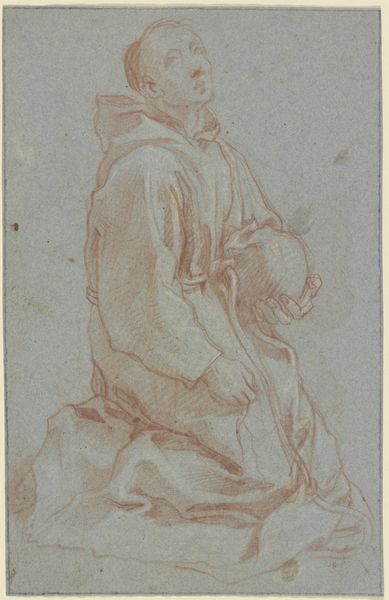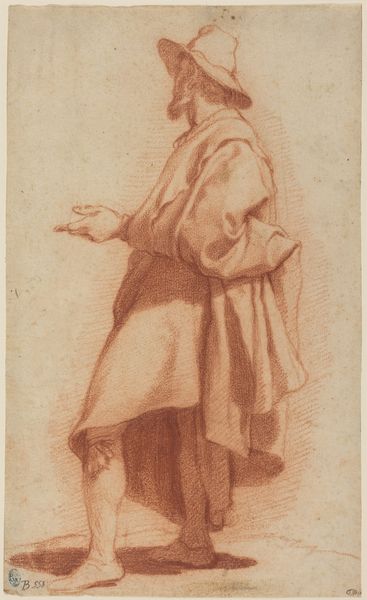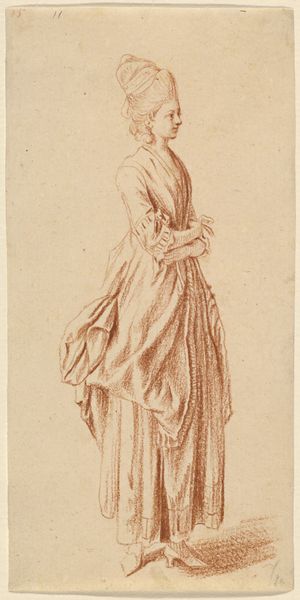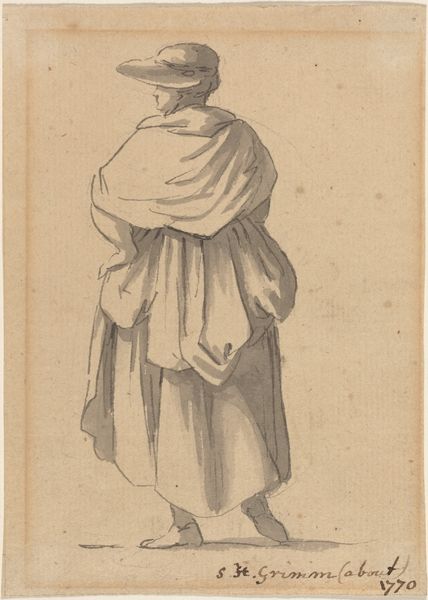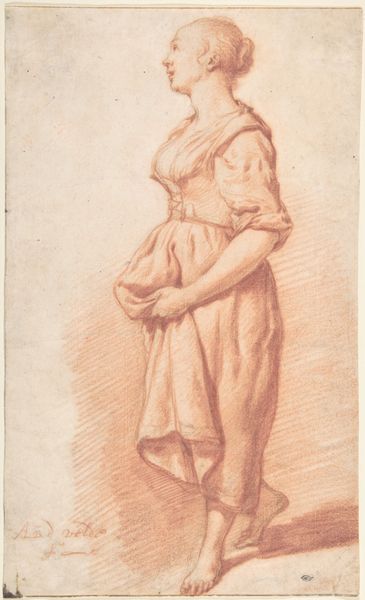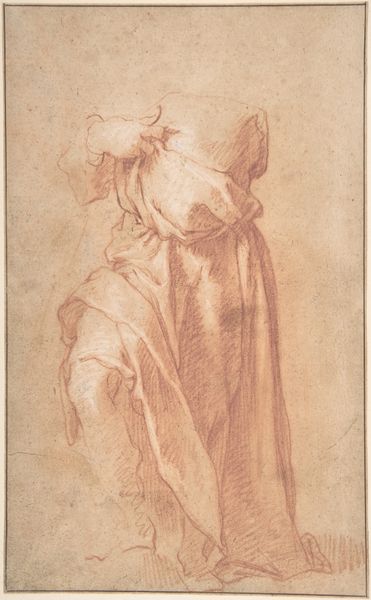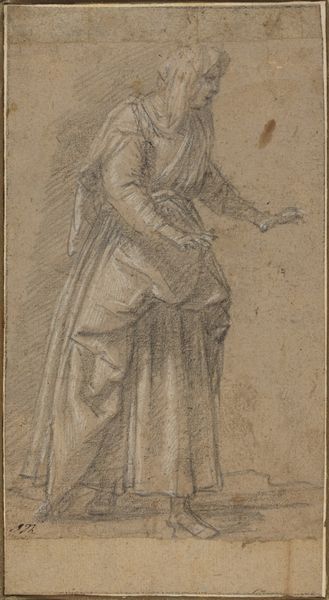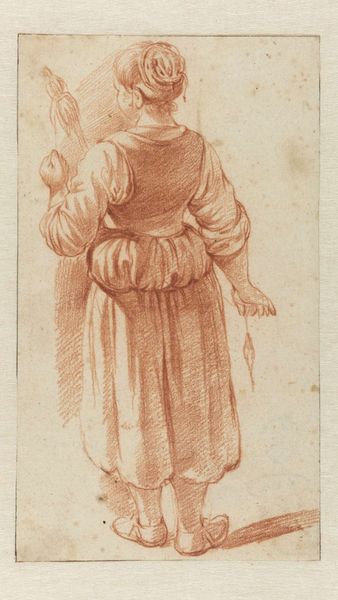
drawing, red-chalk, paper
#
pencil drawn
#
drawing
#
netherlandish
#
toned paper
#
light pencil work
#
baroque
#
red-chalk
#
pencil sketch
#
charcoal drawing
#
paper
#
pencil drawing
#
coffee painting
#
14_17th-century
#
portrait drawing
#
pencil work
#
watercolour illustration
Copyright: Public Domain
Editor: This is "Bauernmädchen, eine Schüssel auf dem Kopf tragend" – or "Farm Girl Carrying a Bowl on her Head" – a red-chalk drawing by Adriaen van de Velde held at the Städel Museum. There's a lightness to it, and I'm struck by the artist’s rendering of weight, how he suggests the girl’s posture supporting the bowl. What do you see in this piece from a formalist point of view? Curator: Immediately, I am drawn to the interplay of lines and the overall composition. Notice how the verticality of the figure is subtly disrupted by the curve of her arm and the tilt of her head, creating a dynamic tension. The artist masterfully employs chiaroscuro – the contrast between light and dark – to define the form. Consider the textural differences: the smooth surface of the bowl against the more heavily shaded folds of her clothing. Does this contrast also intrigue you? Editor: It does. I hadn't thought of it that way, but seeing the contrast in textures really brings out the depth of the image. So, it’s less about who the girl is and more about *how* the artist depicts her? Curator: Precisely. It is the inherent formal qualities – line, shape, color (or in this case, tone), texture, and composition – that command our attention. Semiotics might reveal how the "bowl" signifies burden or labour, yet structurally, its roundness provides balance to the figure’s rectangular form. Consider the negative space; does the emptiness around her serve a purpose in the drawing? Editor: Now that you point it out, the space around her gives her form greater prominence. I came in seeing a young farm girl, but now I appreciate the drawing as a carefully balanced composition of line and shape, creating interest. Curator: Indeed. It's through this formal analysis that we access the artist’s technical skill and appreciate the aesthetic achievement independently of narrative content.
Comments
No comments
Be the first to comment and join the conversation on the ultimate creative platform.


